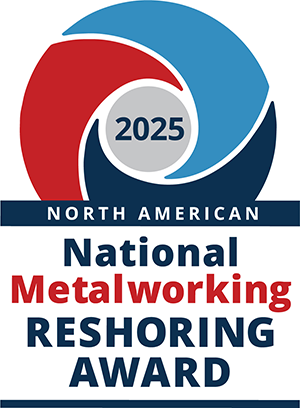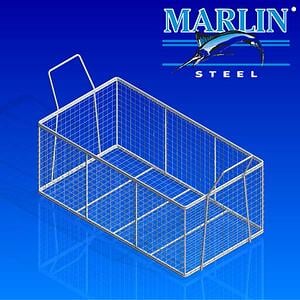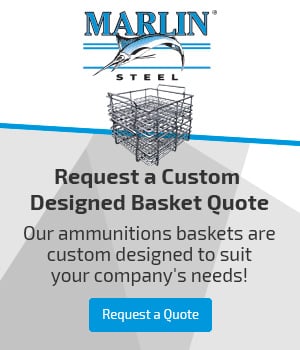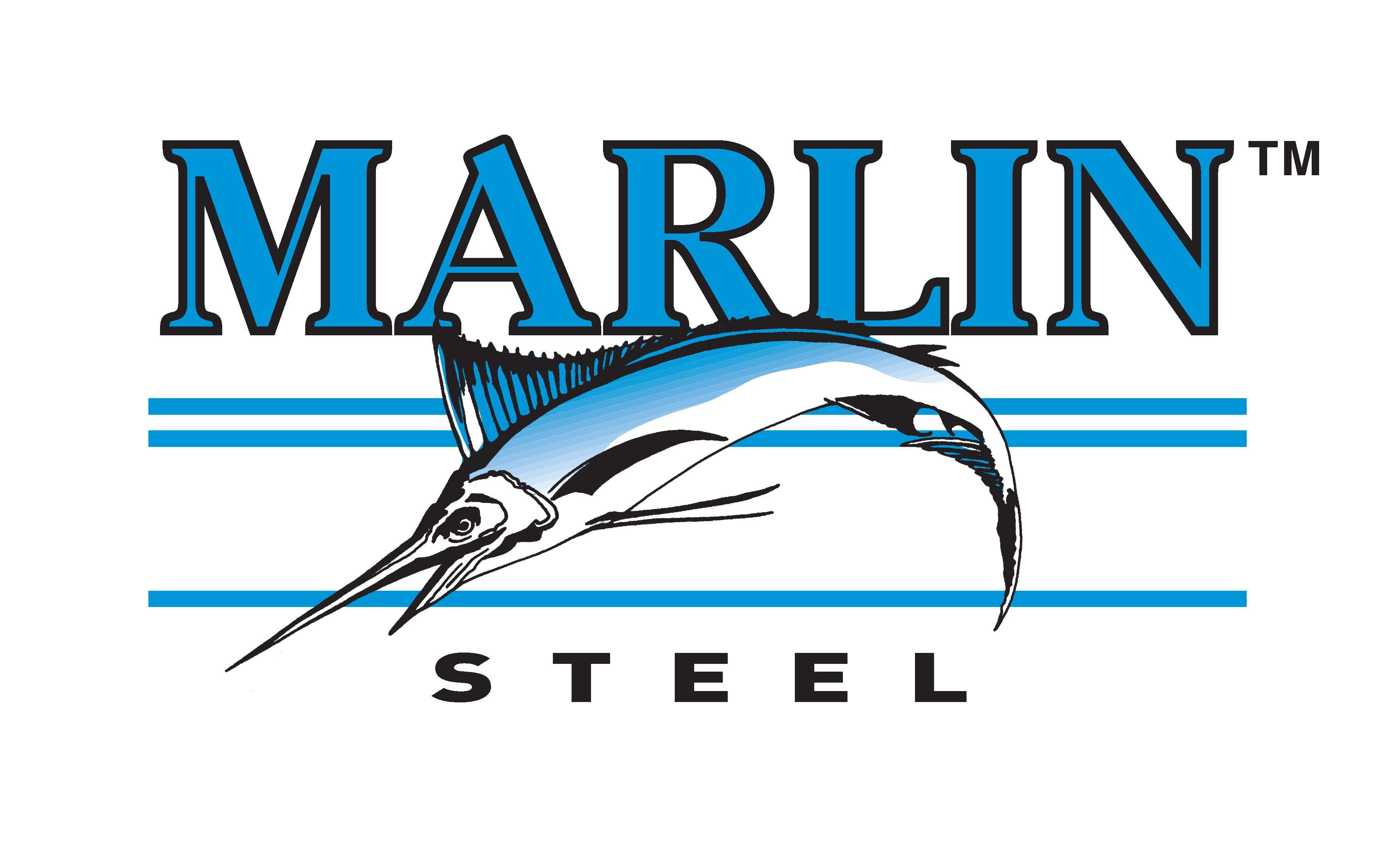To the layman, the differences between one grade of stainless steel and another are easy to miss. However, to a manufacturer, the difference between stainless steel alloys such as grade 304 stainless steel and grade 316 can be huge.
One question that Marlin Steel’s degreed engineers hear a lot would be: Is grade 316 stainless steel worth the extra cost over the stainless steel 304 alloy?
The answer depends on your application and needs.
What is 316 Stainless Steel?
Grade 316 is a popular alloy of stainless steel with a melting range of 2,500 °F – 2,550 °F (1,371 °C – 1,399 °C). As an austenitic stainless steel alloy, it has qualities such as high strength, corrosion resistance, and high concentrations of chromium and nickel. The alloy has a tensile strength of 579 MPa (84 ksi) and a maximum use temperature of around 800˚C (1,472˚F).
Additionally, grade 316 has added molybdenum in its formulation, which improves the alloy’s resistance to acids, alkalis, and chloride pitting.
316 Stainless Steel Properties & Applications
Grade 316 steel comes in a close second to 304 stainless steel in terms of commonality. With similar physical and mechanical properties to grade 304, it’s nearly impossible to tell the difference between the two with the naked eye. The primary differentiator is in grade 316’s material composition:
- 16 percent chromium
- 10 percent nickel
- 2 percent molybdenum
The increased nickel content and the inclusion of molybdenum makes grade 316 stainless steel a bit costlier than grade 304 per ounce of material. But where grade 316 stainless proves superior is its increased corrosion resistance—particularly against chlorides and chlorinated solutions. This makes grade 316 stainless particularly desirable for applications where exposure to salt or other powerful corrosives is an issue.
Some of the more common applications for grade 316 steel are:
- Stainless steel baskets
- Marine parts
- Outdoor electrical enclosures
- Medical-surgical instruments
- Pharmaceutical equipment
- Chemical equipment
What is 304 Stainless Steel?
Another popular high-performing alloy, grade 304 stainless steel is a durable material in terms of tensile strength, durability, corrosion, and oxidation resistance. The melting point of stainless steel 304 is reached at temperatures ranging between 2,550 °F – 2,650 °F (1399 °C – 1454 °C). However, the closer grade 304 stainless steel reaches its melting point, the more tensile strength it loses.
Grade 304 stainless steel is especially exceptional for its high tensile strength of about 621 MPa (90 ksi). Stainless steel 304 alloy has a maximum operating temperature of about 870˚C.
304 Stainless Steel Properties & Applications
One of the most common grades of stainless steel used, 304 steel has excellent corrosion resistance due to its high percentage of chromium. Its chemical makeup consists of:
- 18 percent chromium
- 8 percent nickel
There are small amounts of carbon and manganese present at times also. These elements make it resistant to oxidation, which makes for easy cleaning and sanitization.
Some of the more common applications for grade 304 steel are:
- Auto moldings and trim
- Wheel covers
- Storage tanks
- Electrical enclosures
- Kitchen equipment and appliances
One weakness of 304 stainless steel is its susceptibility to pitting, localized areas of corrosion, due to exposure to high chloride solutions or saline environments. As little as 25 ppm of chlorides can cause pitting corrosion to begin.
What’s the Difference Between Grade 316 and Grade 304 Stainless Steel?
The most basic difference between grade 304 and grade 316 stainless steels is that 316 tends to have more nickel and a bit of molybdenum in the mix. The general mechanical properties of the two metals are mostly comparable.
The increased nickel content and the inclusion of molybdenum allows for grade 316 stainless steel to have better chemical resistance than 304 stainless steel. It’s ability to resist acids and chlorides, including salt, makes grade 316 ideal for chemical processing and marine applications.
However, the addition of nickel and molybdenum also makes grade 316 a more expensive alloy than stainless steel 304 per ounce of material.
Additionally, the melting point of grade 304 stainless steel is a bit higher than that of grade 316. The melting range of 316 is 2,500 °F – 2,550 °F (1,371 °C – 1,399 °C), roughly 50 to 100 degrees Fahrenheit lower than the melting point of grade 304 stainless steel.
Though the stainless steel 304 alloy has a higher melting point, grade 316 has a better resistance to chemicals and chlorides (like salt) than grade 304 stainless steel. When it comes to applications with chlorinated solutions or exposure to salt, grade 316 stainless steel is considered superior.
Three Benefits of Using 316 Stainless Steel
1. Corrosion Resistant Properties
Due to the addition of molybdenum, grade 316 stainless steel is more corrosion resistant than similar alloys, such as 304 stainless steel. This reduces pitting from chemical environments and allows grade 316 stainless steel to be used in highly acidic and caustic environments that would otherwise eat away at the metal. For instance, grade 316 stainless steel can withstand caustic solutions and corrosive applications such as vapor degreasing or many other parts cleaning processes.
These properties also make grade 316 stainless steel ideal for pharmaceutical and medical applications. Since sterilization processes in these industries combine both strong disinfectants and or with high temperatures to prevent contamination, a resistant alloy such as grade 316 is ideal.
2. Marine Applications
Seawater and salt air can be especially damaging to metals. Besides the rough environment of the sea and marine applications, chlorides, such as salt, can eat away at even the toughest metals. Salt will even compromise the protective oxide layer of grade 304 stainless steel, resulting in rust. For marine applications, or processes involving chlorides, grade 316 stainless steel is ideal.
Grade 316 has especially better resistance to salt and chloride pitting. Pitting corrosion can occur when stainless steel alloys, such as grade 304 stainless steel, come into contact with salt-rich sea breezes and seawater. Chloride resistant metals, like grade 16 stainless steel, are essential to use for naval applications or anything involved with chloride.
3. Lasting Durability
Grade 316 stainless steel is both tough and versatile, which makes it ideal for custom wire baskets built to last for years of use. This grade of stainless steel can be used to make durable baskets designed to even survived repeated exposure to high impact processes.
Is It Worth the Extra Cost?
If you have an application with very powerful corrosives or relies on chlorides, then paying a premium for grade 316 stainless steel is definitely worth it. In such applications, 316 stainless will last many times longer than grade 304 stainless steel would—which can mean many extra years of useful life.
However, for applications using milder acids or where salt exposure isn’t a concern, the stainless steel 304 alloy can work just as well.
Just be sure you’ve accounted for all processes and environmental factors when choosing a material for your industrial parts baskets. For example, if your manufacturing plant is located on or near the coast, salty sea air can corrode metal that isn’t resistant to chlorides.
Overall, 316 can be worth the expense if you need to have superior corrosion resistance. For many other applications, grade 304 stainless steel will serve perfectly fine.
Marlin Steel's Stainless Steel Solutions
When it comes to providing stainless steel solutions, Marlin Steel relies on grade 316 stainless steel to manufacture its in-stock products and custom wire baskets.
Marlin specializes in manufacturing high-quality steel products for pharmaceutical, industrial, aerospace, and many other industries where it is critical that products have superior corrosion resilience.
For products that will face less harsh corrosives, like for the food and automotive industries, Marlin is still able to provide incredible quality and fast delivery to its clients.
Don’t know which metal is the best for your custom wire basket application? Consult an experienced mechanical engineer today!









.gif)


